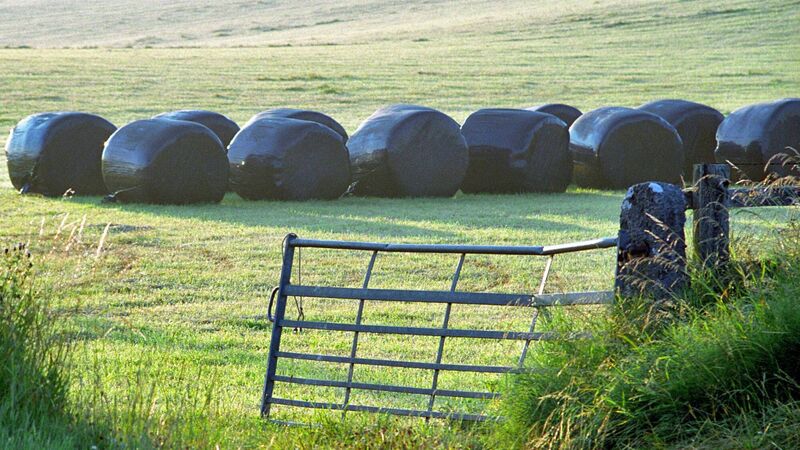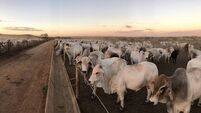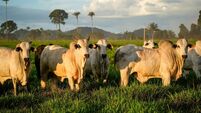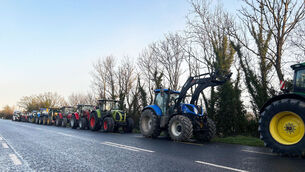Pits and bales are being opened around the country as winter is starting to bite.
Rain this week hastened housing, as ground conditions have become difficult.
Even if you have plenty of grass still to graze, stock will be better off indoors until conditions are more suitable to get grass grazed off.
2020 has been a very good grass growing year and there is plenty of silage saved on most farms.
They often say that, when it is made, it will be fed!
As is always the case, grass silage quality varies greatly around the country.
The feed value of this year’s silage has been significantly influenced by the weather.
Early May first cuts are excellent, early June cuts are average, and many second cuts are bordering on being too dry and not great quality.
In general, DMDs are between 65 and 70 for first cuts, but with some early cuts closer to 75.
Feed value of grass silages
I have been using a portable NIR4 machine for five seasons to give instant results to customers. It is an excellent tool and can test all types of silage in real time.
For the most accurate analysis result, it is very important that your silage gets to the lab as fresh as possible.
When you get your silage results, what figures do you look for?
n Most immediately, look for the DMD, but there are more important figures to look for, DMD is a factor of several other characteristics of the silage being analysed.
n The pH of silage is the main indicator of preservation; it should be between 3.8 and 4.2 for good preservation.
Drier silages will be higher in pH, but can still be stable.
n The dry matter of your silage determines the amount of fresh feed that animals can consume.
Many 2020 second cut silages are very dry, and will require careful management at feed-out. Use of a shear grab will be a big help to reduce the surface area of the pit face.
n ME and/or UFL are indications of the energy that will be available to your animals per kg of dry matter consumed.
Energy is what produces meat and milk in ruminants.
n Protein is essential for healthy, productive animals, and it encourages appetite.
There is a big variation in silage protein this year, with some as high as 20% but most are in the 10-13% range.
Extra protein supplementation will be needed at low percentages, to maintain animal performance.
n There has been a trend over the last few years for silages to have higher than desired ash contents.
This is entirely down to field management before, during, and at harvest.
Mowers too tight to the ground, silage fields not rolled, tedders and rakes scratching clay and stones off the ground, all of these contribute to excess ash in silages and contribute to poor preservation, spoilage and poor intakes.
Spoilage and clamp management
Moulds and toxins, if they enter an animal’s digestive system, will cause poor performance, as they inhibit the population of good bugs in the rumen.
In many countries around the world, it is common practice to use a toxin binder in diets to prevent both visible and invisible mycotoxins from moulds inhibiting animal performance and compromising animal health.
I have recently invested in an infrared camera attachment for my smartphone, to identify hotspots on silage pits, and the results have been very interesting.
It identifies temperature variation with colour coding, red being hot and blue being cold.
In some pits, the temperature range can be up to 20 degrees centigrade.
The normal temperature of stable silage is 19-21 degrees, it’s 35-40 degrees in and hot spots.
These spots, once identified on screen, are warm or hot to the touch, and are not good quality feed.
A sharp shear grab really is an essential tool to help manage silage well.
Removing silage with a loader bucket has the potential to increase losses at feed-out and increase production costs.
The smaller the pit face surface area the less potential for spoilage. Silage is expensive to produce without wasting it due to poor pit management.
It is also a good idea to go across the pit as fast as possible to minimise exposure of silage to the atmosphere. Where silage is proving difficult to manage at the pit face, you should aim to get across the pit every 2-3 days.
With both wet and dry silages, it will be best practice to feed it fresh each day, to minimise waste in storage and at the feed trough.
Animals will eat fresh feed better than stale material. Managing intakes is the best way to manage animal output.










